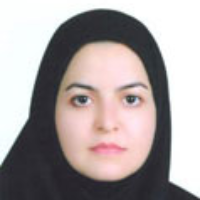Crystal size distribution analysis of plagioclase in Neogene-Quaternary olivine basaltic lava flows in Dehaj-Javazm area, northwest of Shahre-Babak, Kerman
The rather limited Neogene-Quaternary olivine basaltic lava flows are outcropped in the Dehaj-Javazm area, north of Share-Babak, in the NW of Dehaj-Sarduieh magmatic belt as a part of the Urumieh-Dokhtar magmatic assemblage (UDMA). The rocks contain significant amounts of plagioclase both as phenocrysts and microliths in the microlithic groundmass which play an important role in the reconstruction of magmatic processes. The goal of this research is to determine the three-dimensional shape, growth time, and nucleation rate of the plagioclase crystals by using the crystal size distribution (CSD) method to determine the evolution of the magma during cooling and crystallization. Moreover, the plagioclase crystals residence time is also calculated to achieve the temporal aspects of the analysis.
Method
Field studies carried out by sampling from each outcrop and finally 60 samples were collected. After thin sections preparation and using polarizing microscopes, detailed petrographic studies for quantitative analysis of crystal sizes of the samples were performed. This led to the separation of the four least altered samples as the representative of the study area. Due to the homogeneous texture of the rocks, one image was prepared for each sample as the characteristic texture of the whole thin section. Image processing was performed to separate plagioclase crystals in binary images using Adobe Photoshop CS6 software. Then, measurements, data processing and analyzes were performed using Image j, CSD Slice 5 spreadsheet and CSD Correction 1.40 programs.
The Neogene-Quaternary olivine basaltic rocks in the Dehaj-Javazm area contains phenocrysts of olivine, clinopyroxene, and rarely of plagioclase in a matrix of microlithic plagioclase. The main textures of the rocks are porphyry, glomeroporphyritic, and flow texture which are accompanied by disequilibrium features. Based on geochemical data, the composition of the rocks varies from basalt and trachytic basalt to tephrite/ basanite.The texture and size of crystalline phases in magmatic rocks preserve essential information about the conditions of crystallization processes. So, by studying the igneous rock textures with the crystal size dispersion (CSD) method, it is possible to realize the governing processes during magma crystallization. The number of crystals in a rock can indicate information on the nucleation and growth rate of the crystal. Therefore, the three-dimensional shape, growth time, and nucleation rate of plagioclase crystals were investigated in the studied rocks by using the CSD method. The length, width, area, angle, and location of the center of the crystals (coordinates of X and Y points) were measured by Image j software. Then, the CSDSlice 5 spreadsheet program was used to convert 2D data to 3D. Thus, the crystal dimensions were calculated based on the ratio of short, medium, and long axes (S: I: L). The shape of the crystals was determined in Zingg's diagram. In this diagram, the crystals based on the ratio of their short, medium, and long axes were divided into four categories of tabular, bladed, prolate (acicular), and spherical (equant). So, it was found that in the studied samples, plagioclase crystals are mainly bladed in shape.Eventually, using CSD Correction 1.40 software, the semi-logarithmic diagram of CSD was drawn for each sample. Using the amounts of slopes in each CSD plots, the residence time of the crystals for each sample was calculated based on the formula Tr= (-1/G*m) / 31536000. In this formula, Tr and m are calculated residence time (year) and crystal population trend line slope respectively; whereas G is crystal growth rate (mm/s). The G value is selected based on the proposed value for the basaltic magma with a cooling time of 3 years (G = 10-9 mm/s), while 31.536000 is the conversion factor from seconds to years.Studies show that plagioclase crystals in the CSD diagram have a non-linear trend with a distinct break in slope, which indicates two growth stages with different nucleation rates and cooling times for the crystals. The first stage is characterized by plagioclase phenocrysts with low amounts of nuclei and a gentle slope; whereas in the second stage, they developed as microlith with a high nucleation rate and steeper slope. The higher slope of the microlith population compared to the phenocryst ones shows that the microlith population underwent higher undercooling which might be happened in low depths and also in a shorter period of time. The nonlinear CSD trends represent two different rates of crystal growth. This may indicate the multi-stage crystallization of magma during its ascent, the textural coarsening process during the crystallization, the modification in the course of crystallization due to changing environment, and also magma degassing.The nucleation rate and cooling time for plagioclase crystals were determined from 9.65×10-9 to 12.46×10-9 and 1.00 to 2.33 years, respectively. This indicates short residence time of plagioclase crystals in the magma chamber, rapid cooling, and a high rate of cooling of plagioclase in a volcanic system.
The presented results generally support that the plagioclase crystals in the Neogene-Quaternary olivine basaltic rocks of Dehaj-Javazm are mainly bladed in shape and their calculated growth time indicates the high cooling rate and short residence time of magma in the magma chamber. The nonlinear CSD trend represents two different rates of crystal growth, which may indicate the multi-stage crystallization of magma during its ascent, textural coarsening process throughout the crystallization, the modification in the course of crystallization due to changing environment, and also magma degassing. The orientation of plagioclases in the rose diagrams show a flow texture developed due to the low viscosity of magma.
CSD , Growth rate , Nucleation , Neogene- Quaternary , UDMA
- حق عضویت دریافتی صرف حمایت از نشریات عضو و نگهداری، تکمیل و توسعه مگیران میشود.
- پرداخت حق اشتراک و دانلود مقالات اجازه بازنشر آن در سایر رسانههای چاپی و دیجیتال را به کاربر نمیدهد.



